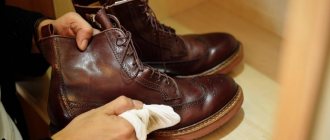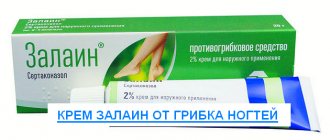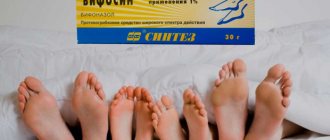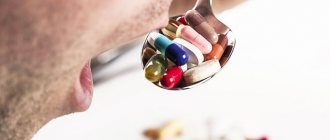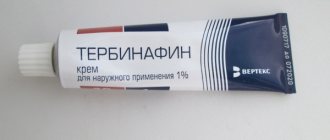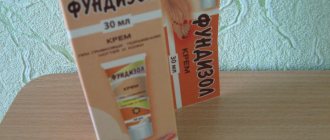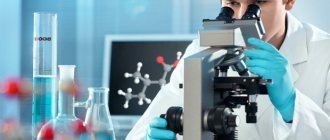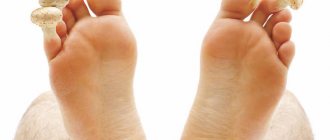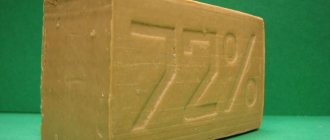The word “lichen” evokes unpleasant associations for many. Some consider this disease to be very contagious, so they are afraid to pet a dog or cat, which “certainly” must be the spreader of such a terrible infection, and, of course, they avoid people who have noticeable lichen on their leg, arm or other open areas of the body. In fact, in medicine, the term “lichen” is applied to a whole group of skin diseases, some of which are contagious, and some that are quite harmless to others, for example, eczema or psoriasis, the cause of which can be a common allergy. But how can you recognize what kind of lichen is on the leg or arm of a person standing next to you? How to determine what kind of rash has appeared on your own body? What should I do with it and should I immediately go to the doctor? Let's try to figure it out.
Mechanism of rash appearance
With redness and rashes, our skin responds to dozens of irritants - from an allergic reaction to anything to the introduction of pathological microorganisms into the body. The rash can be primary, that is, appearing where there was nothing before, and secondary, forming in place of the primary with its further development. All diseases, the symptom of which is the appearance of itchy nodules, spots or papules on the skin, are called “lichen”. On the leg, arm and other open areas of the body, such rashes cause their owners not only physical suffering, but also moral problems, and a rash on the fingers or soles creates difficulties when walking and wearing shoes. There are many types of lichen. Not all of them are contagious, but each of them poses a danger to the patient. Having appeared in one place, the rash can spread throughout the body, and its incessant itching can lead to scratching - a wide open gate for hundreds of microbes. In addition, any rash can be a symptom of an internal organ disease, which must be identified. Therefore, if lichen appears on the leg or somewhere else, you need to contact a dermatologist to determine the etiology of the rash and its proper treatment.
Diagnostics
The types of lichen in humans are determined during differential diagnosis. It is impossible to independently determine the type of lichen. The examination consists of stages.
Collecting information from the patient or parents when a child is infected:
- when and after what did the rash appear;
- presence of additional symptoms;
- hereditary predisposition;
- existing chronic pathologies.
Initial inspection:
- examination of the rash for peeling, the presence of bubbles with liquid and swelling of the rash site;
- measuring body temperature;
- determining the location of the rash.
Other examination methods:
- Illumination with Wood's lamp. Used to detect fungal infection.
- Treating stains with iodine to identify the degree of peeling of the epidermis and more thoroughly examine the stain.
- Taking scrapings from the rash. Required to identify the type of pathogen.
- Taking tests to detect infection in the body, the presence of an allergic reaction and determine the activity of the digestive organs.
If there is a possibility of having a contagious form of lichen, all family members are examined. Before using medications prescribed by a dermatologist, consultation with a therapist or pediatrician is required to exclude contraindications.
Trichophytosis
This disease has other names, such as dermatomycosis, dermatophytosis, scab, ringworm. It rarely occurs on the leg or arm and in most cases affects the scalp. Previously, this disease was treated with wax, tar or resin, but first the patient’s head was shaved. Hence the name - ringworm. It is caused by several types of pathogenic fungi that parasitize humans and animals. Some parasites settle only where hair grows en masse (head, groin, armpits), others prefer only the limbs. You can become infected with ringworm from animals, and in these cases the pathogenesis of the disease will be more severe. The second source of illness is a sick person. The routes of infection are the same as for all mycoses:
— general items (towel, clothes);
- Houseware;
- close physical contact.
It is important to know what ringworm on the leg looks like. The photo above clearly shows that the rash with this disease looks like round red spots. They are brighter at the edges and lighter in the center. In the patient, the rash causes severe itching. Sometimes the scratching areas become infected and purulent ulcers form.
Mild forms of ringworm are treated locally by applying Miconazole or Clotrimazole antifungal ointments to the lesions and adjacent areas. In severe cases, Griseofulvin is prescribed orally. If the source of infection is a pet, you need to vacuum up all the fur, and then thoroughly wash the room with water and bleach. Things of a sick person should be washed with fungicidal agents in very hot water.
Folk remedies
Ringworm in a mild form can be treated with homemade medications. You can also use the products in complex treatment and as prevention.
Recommended medicinal compositions:
- treat the affected skin with tar soap once a day. Soap has an antiseptic effect and helps accelerate skin cell regeneration;
- Boil birch buds in equal proportions in water for 15 minutes. use for compresses 3 times a day for 15 minutes. The product is suitable for use on the face and skin around the eyes. The product eliminates inflammation, itching and flaking;
- Use fresh juice from Kalanchoe for a compress. The bandage is removed when the composition is completely absorbed into the skin. Carry out the procedure 2 times a day. The plant has an antibacterial effect and accelerates the restoration of skin cells;
- chop fresh potatoes and drain the juice. Use the paste as a mask, secure with a bandage if necessary. Leave for 30 minutes, 2 times a day. Potatoes help even out skin tone, accelerate regeneration and moisturize the skin.
Before using traditional recipes, it is required to test for an allergic reaction. Ringworm is not a particularly dangerous disease, but the addition of a secondary infection with the development of subsequent complications is dangerous. The pathology can be contagious and transmitted from both humans and animals. Complex treatment is prescribed by a dermatologist depending on the type of pathology.
Author: Kotlyachkova Svetlana
Article design: Oleg Lozinsky
Microsporia
This is another type of ringworm. It is caused by the fungus Microsporum, which affects any part of the body. It parasitizes many animals (dogs, cats, sheep, pigs, horses, rabbits, wild animals). A person becomes infected while caring for them. You can also become infected with microsporia from a sick person by sharing household items or clothing with him. To do this, it is enough for hair, hair or scales from infected areas of the skin to come into contact with the skin, which can happen, for example, in a hairdresser, or when sharing things with a sick person. Microscopy or ringworm on a person's leg appears as clearly defined, scaly spots. If the disease occurs on the head, in the beard, on the eyelashes or eyebrows, in the affected areas the hair breaks off, leaving a characteristic “hedgehog” (that’s why it is called so - ringworm). Fungal spores occupy the remaining hair, covering it with a flaky sheath. It’s hard to believe, but in our space age, many people, especially city residents, suffer from microsporia. If in winter such people manage to hide their problem from others, then in summer the rash is clearly visible on open areas of the body, for example, lichen on the leg. Treatment of the disease in children or adults consists of water procedures using antifungal detergents. After this, antifungal ointments with ketoconazole are applied to and around the affected area.
Complete information about fungal infections of the skin and nails
Types of mycoses
Doctors distinguish three types of fungal nail disease (onychomycosis): normotrophic, hypertrophic and atrophic.
Subscribe to our INSTAGRAM account!
- In the first case, only the color of the nails changes. White or yellow spots and stripes appear on them. But the shine and normal thickness remain.
- In the second case, the shine also disappears. The nail gradually thickens and becomes deformed. There is pain in the legs when walking.
- The third type is characterized by a dull brown color of the nail plate, its thinning and rejection from the bed, and the exposed area is covered with loose layers.
Ways of infection by fungus
Mycoses are caused by pathogenic fungi. Infection usually occurs from a sick person or animal, or through household means: through objects that were used by the patient. The skin of the feet, palms and nails is most often affected. Moreover, infection of the nail plates (onychomycosis) on the feet occurs mainly in public baths or swimming pools. Infected flakes of skin from a sick person flake off and end up on the floor, benches, grates, and rugs. In conditions of high humidity, microorganisms persist for a long time and actively reproduce.
Intra-family transmission of infection also occurs. This occurs when using shared shoes, towels, washcloths, or due to not thoroughly cleaning the bath after washing.
The development of onychomycosis on the hands is facilitated by injuries Onychomycosis often develops in individuals receiving long-term antibacterial, corticosteroid and immunosuppressive therapy.
Self-diagnosis will deceive
Many people are confident that they can recognize nail fungus on their own. But that's not true. Despite the fact that most nail changes turn out to be a fungus, the other nature of these changes should also be taken into account. Here we need to highlight, first of all, chronic nail injury, psoriasis and eczema . Also, changes in nails can occur with some common skin diseases, internal infectious diseases, damage to the nervous, endocrine, cardiovascular systems, various types of intoxication, as well as dystrophy. Finally, nail changes may be congenital . And although they look similar to a fungal infection, they are not.
The fungus will not go away on its own
Once it starts, a fungal infection will not go away until the fungus is destroyed. Fungi are very tenacious and can survive for months in fallen skin scales. Over time, the fungus affects all parts of the nail and spreads to other nails or skin. Nail fungus is a source of infection for infecting other parts of the body. If it is not cured completely, re-infection will occur due to the remaining focus of infection.
Why is fungus dangerous?
A neglected fungus is a “gateway” to infectious diseases ( for example, erysipelas). In addition, allergization of the human body with a fungal infection is possible, development or worsening of diseases such as bronchial asthma, allergic dermatitis, various skin rashes and reactions. In addition, fungal infection of the nails significantly complicates the course of diabetes mellitus.
Treatment strategy
For onychomycosis, it is imperative to take antifungal drugs in combination with topical agents and removal of the affected nails. Before treating a diseased nail with special ointments, solutions or varnishes, you need to cut or file down the affected area. You can use a keratolytic patch.
For the treatment of fungal diseases of the skin and nail plates, the selection of comfortable shoes is of great importance. It should not injure or put pressure on the leg. In this case, there will be no reason for the disease to worsen. After defeating the fungus, you should not calm down. This disease does not let go of its victims for a long time.
In addition to medications, local treatment also helps in the fight against fungal diseases. People have accumulated many effective recipes.
Measures to prevent fungal diseases
- When visiting a bathhouse, swimming pool or beach, do not forget to wear rubber slippers.
- Never use other people's towels or washcloths.
- Wearing or even trying on someone else's shoes is also not recommended.
- Before going to bed, your feet should be washed and then wiped dry.
Mycosis is mainly affected by people with weak immune systems, so it is necessary to constantly improve your health: take vitamin complexes, stop drinking alcohol and cigarettes, and do gymnastics
Traditional recipes for fungal diseases
GARLIC COMPRESSES. Mix equal parts garlic juice, 90-degree alcohol and distilled water. The resulting mixture is a very strong antiseptic. You need to moisten a cotton napkin in it and apply a compress to the affected area in the usual way.
GARLIC TEA. In addition to local treatment, garlic preparations should also be taken orally. You can make garlic tea, decoction or tincture. To prepare tea, take 2-3 cloves of garlic, mash them and pour a glass of boiling water. Let it brew for 5-7 minutes and take 3-4 times a day.
PROPOLIS SOLUTION. It is good to lubricate the areas affected by the fungus with an alcohol solution of propolis: dissolve 10 g of propolis in 50 ml of 30% alcohol.
MINT WITH SALT. Crush peppermint leaves and mix them with the same amount of table salt. Place the mixture between your toes for about 1 hour, then rinse your feet with cool water and dry with a cotton napkin. Repeat the procedure until complete healing.
LILAC TINCTURE. Take 10 g of common lilac flowers, pour 100 ml of 70% alcohol. Leave for 10-15 days in a dark place, shaking regularly. Wipe the fungus-affected areas with the resulting tincture.
POTATO JUICE. Massage the fungus-affected areas with fresh potato juice or a slice of raw potato. The course of treatment is 1 month. A noticeable improvement occurs already on the 10th day.
For fungal infections of the skin, Veronica officinalis is useful: take baths or make lotions from a decoction of its herbs, and also drink an infusion. The healing tea is especially effective when combined: 2 teaspoons of veronica, tricolor violet and string per 0.5 liters of boiling water - drink in divided portions per day. Veronica officinalis juice is prepared for future use, preserving it with an equal amount of alcohol - also for lubricating fungal skin lesions.
Toadflax has a reliable fungicidal and ceratolic, that is, cauterizing effect , especially for fungal infections of the oral cavity. For rinsing, use a water decoction of the herb: 1-2 tbsp. Leave spoons of flaxseed in 1 cup of boiling water for 2 hours in a warm place.
Creeping thyme, the herb Bogorodskaya , has a strong bactericidal effect, especially against pathogenic fungi For washing 2 tbsp. Brew spoons in 1 glass of boiling water, leave for at least 1 hour. An ointment is prepared from the powder: 1 part dried herb to 4 parts fat base.
blackhead plant has antifungal activity. Ointments with its extract are especially effective in the treatment of fungal diseases. An infusion of the herb - 2 teaspoons per 1 glass of boiling water - is taken in fractional portions for fungus on the skin.
Ringworm rosea
This disease is not contagious and appears as a complication of a cold or flu. It is not yet known exactly what or who causes pityriasis rosea. On the leg, arm or torso (everywhere along Langer's lines) it appears as a group of pink oval spots with peeling in the center. The first manifestations in a person can begin either during a cold or after recovery. Pityriasis rosea does not require treatment, as it goes away on its own without leaving any traces. Only if the patient experiences unbearable itching, doctors prescribe antihistamines and antipruritic ointments.
Ringworm scaly
This is the name of one of the most common and most unpleasant chronic skin diseases - psoriasis. It does not pose a danger to others, but it causes a lot of trouble for a sick person. Some people suffering from lichen planus even need the help of a psychologist, their self-esteem and quality of life are so reduced due to this disease.
There is no definite answer to what lichen looks like on a leg or arm, because psoriasis comes in several types:
1. Plaque-like, or simple. Characterized by large inflamed spots covered with a gray-white scaly film. When it peels off, the skin underneath begins to bleed.
2. Reverse. It is found on flexural surfaces, for example, in the knee area, and in all folds - in the groin, under the arms, and in women - under the breasts. It looks like inflamed red spots.
3. Drop-shaped. With it, the rashes look like dewdrops or drops of dark red or purple color.
4. Exudative. It looks like blisters filled with exudate. In this case, the skin in the area of inflammation is hot, red and very painful.
5. Erytodermic. Characterized by very large inflamed spots covering large areas of the body. In this case, the skin in the lesions can exfoliate, peel and become very itchy.
6. Arthropathic. This type is characterized by inflammatory processes in the joints, which become very painful.
7. Nail psoriasis.
The causes of psoriasis have not been precisely established. There are only hypotheses according to which the disease appears when the processes of cell growth and differentiation in the skin are disrupted. Or when the process of producing autoimmune bodies is disrupted.
Skin injuries, some detergents, working with chemicals, allergies, and nervous disorders contribute to the development of psoriasis.
Being a serious chronic disease, psoriasis requires complex treatment methods, the basis of which is taking medications that improve all processes in the skin, including control of T cells. Also, ointments, herbal medicine, and physiotherapeutic procedures are used locally for treatment.
Lichen planus on legs
This disease is an allergic reaction of the skin to irritants and can appear on the body and in the mouth. Its exact mechanism has not yet been established, but it is known that the risk factors are:
- some medications;
- diseases of internal organs, primarily the liver, stomach, kidneys, pancreas;
- nervous disorders;
- injuries to the skin and mucous membranes;
- weakened immunity.
Lichen planus can manifest itself in several forms:
1. Typical. The symptom is flat spots of a whitish-pearlescent hue. They tend to merge to form large plaques or mesh. After healing, pigmentation remains on the skin.
2. Hyperkeratic (the lesions have clear keratinized boundaries).
3. Exudative-hyperemic. Formed in inflamed areas of the oral mucosa.
4. Erosive-ulcerative. A very severe form, often acts as a complication of previous ones. Long-healing ulcers of various shapes and sizes form on the skin and mucous membranes. They are covered with fibrous secretions, the removal of which causes bleeding.
5. Atrophic.
6. Bullous. Characterized by the formation of blisters, when opened, erosions appear. Lichen planus can be treated with traditional methods, such as compresses of decoctions of mullein, St. John's wort, sage, yarrow, willow bark, burdock, and goldenrod. After compresses, bandages with sea buckthorn oil are applied to the affected area. There are several dozen folk recipes for treating this disease, but before you use them, you need to visit a dermatologist and find out the cause of your disease. It is likely that in parallel with external therapy, internal organs will need to be treated.
Ringworm between legs
This fungal disease has another name - athlete's foot. It can affect women and men. Methods of infection are household (using sick towels, clothes alone) and contact-sexual contact. Inguinal lichen manifests itself as itching in the genital and groin areas, a red-brown rash, and peeling in the affected areas. Without treatment, the rash spreads to adjacent areas of the skin. If these symptoms are detected, you need to consult a doctor to clarify the type of fungus that has penetrated the skin and choose the right medications. Treatment is carried out at home, mainly with the help of antifungal ointments. Sometimes the patient is prescribed antihistamines “Diphenhydramine”, “Suprastin” and others.
Complex of drugs
To eliminate lichen, complex treatment is required with medications taken externally and orally. And also with diet and physical therapy. The type of therapy depends on the causative agent of the lichen.
Overview of prescribed funds:
Independent choice of medications or their replacement is unacceptable.

